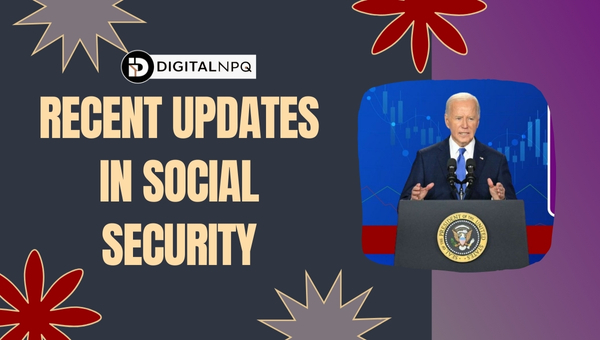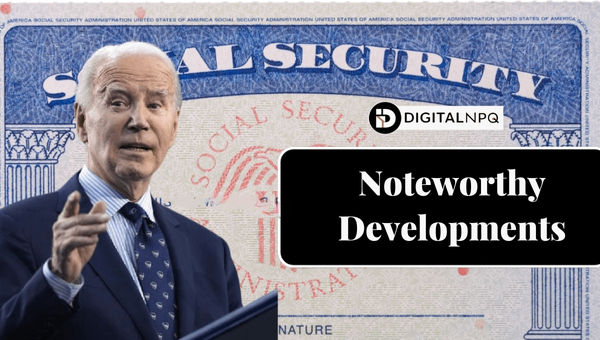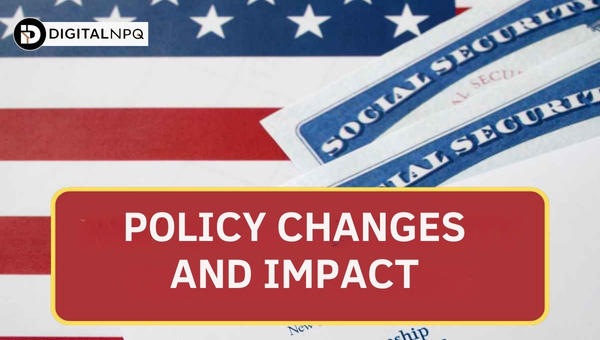Social Security News: Updates and Key Changes

The latest social security news can be overwhelming, but understanding the recent updates can significantly benefit you. This article delves into crucial changes in online services, a simplified disability evaluation process, and expanded access to SSI.
Additionally, we’ll explore noteworthy developments like updates to occupational lists, a 50-year SSI celebration, and new customer service performance trackers.
Lastly, we’ll cover policy changes impacting rental subsidies, representative fees, and overpayment burdens. Stay informed to make the most of these essential updates.
Recent Updates in Social Security
The Social Security Administration (SSA) has rolled out several updates aimed at improving accessibility and efficiency for beneficiaries.

These updates include enhancements to online services, a new streamlined process for evaluating disability claims, and expanded access to Supplemental Security Income (SSI).
Each of these initiatives is designed to make the system more user-friendly and effective.
Social Security Announces Changes to Online Services
The SSA has made significant updates to its online services, particularly for users of the My Social Security accounts.
These changes are comprehensive and aim to improve both security and user experiences:
- Transition to Credential Service Providers: Users who created their accounts before September 18, 2021, will need to switch to either a Login.gov or ID.me account. This transition is designed to enhance security and simplify the login process.
- Enhanced Security Measures: The new authentication methods comply with federal standards, ensuring that user data remains secure and protected.
- Streamlined Access: With the new system, users can manage their benefits, apply for services, and check the status of their applications more efficiently.
- Support for Users: Login.gov offers 24/7 customer support, assisting users in navigating the transition smoothly.
- Encouragement for Early Transition: The SSA advises users to transition their accounts now to avoid disruptions, as the old username and password method will be phased out later this year.
New Simplified Disability Evaluation Process
The SSA has introduced a new process for evaluating disability claims, making it easier for applicants to qualify and receive benefits.
Key features of this streamlined process include:
- Reduced Work History Requirement: The review period for an applicant’s work history has been shortened from 15 years to just 5 years, easing the qualification criteria.
- Updated Occupational Listings: The SSA will no longer consider certain occupations that are rarely found in the U.S. labor market, focusing instead on more relevant job categories.
- Additional Evidence Requirements: For specific occupations that have faced legal scrutiny, the SSA is implementing stricter evidence requirements to support disability claims.
- Overall Impact: These changes aim to reduce the burden on applicants and expedite the decision-making process, thereby improving service efficiency.
Expansion of SSI Program Access
The SSA has also expanded access to the Supplemental Security Income (SSI) program, making it more accessible to eligible individuals.
Key aspects of this expansion include:
- Increased Eligibility Criteria: The SSA has revised the income and resource limits for SSI, allowing more individuals to qualify for assistance.
- Streamlined Application Process: Improvements have been made to the application process, reducing wait times and simplifying requirements for applicants.
- Outreach Programs: The SSA is enhancing outreach efforts to ensure that those who may qualify for SSI are aware of the benefits available to them.
- Support Services: Additional resources and support services are being offered to help applicants navigate the SSI system effectively.
- Community Engagement: The SSA is working with local organizations to improve access and awareness of SSI benefits among underserved populations.
Noteworthy Developments
The Social Security Administration (SSA) continues to make strides in enhancing its services and support for beneficiaries.

Recent noteworthy developments include updates to the list of top occupations used during disability evaluations, significant milestones as we celebrate 50 years of Supplemental Security Income (SSI), and the launch of a new performance tracker to improve customer service.
Top Occupational List Updates for Disability Evaluation
The SSA has revised the list of occupations considered during disability evaluations to better reflect the current job market.
Here are the key changes:
- Identification of Rare Occupations: The SSA identified 114 occupations that are rarely available in the U.S. labor market. These occupations will no longer be used to determine disability eligibility, ensuring a more realistic assessment of claimants’ abilities.
- Revised Evidence Standards: For 13 occupations that have been questioned in federal courts, the SSA has updated the evidence requirements. This change ensures that evaluations are fair and based on robust evidence.
- Focus on Relevant Jobs: By concentrating on common and relevant job categories, the SSA aims to make disability assessments more accurate and reflective of actual employment opportunities.
- Impact on Claimants: These updates are expected to lead to more equitable outcomes for individuals applying for disability benefits, as the evaluations will now consider only pertinent and widely available occupations.
Celebrating 50 Years of Supplemental Security Income
The SSA is marking the 50th anniversary of the SSI program with a series of celebrations and reflections on its achievements.
Key highlights include:
- Historical Milestones: Since its inception in 1974, the SSI program has provided essential financial support to millions of individuals with disabilities and low-income seniors, helping them achieve greater stability and independence.
- Community Events: To commemorate this milestone, the SSA is organizing local events to raise awareness about the benefits of SSI and its positive impact on communities. These events aim to educate and engage the public about the program’s history and future goals.
- Focus on Future Improvements: The SSA is committed to enhancing SSI services and expanding access to ensure that the program continues to meet the needs of its beneficiaries. This includes exploring new ways to streamline the application process and increase outreach efforts.
- Public Engagement: The SSA is inviting public participation in the celebrations to highlight the importance of the SSI program and to foster a greater understanding of its role in society.
Performance Tracker Launch for Customer Service Priorities
A new performance tracker has been introduced by the SSA to improve customer service.
Here are the main features:
- Monitoring Key Metrics: The performance tracker will monitor essential metrics related to customer service, such as wait times, response rates, and user satisfaction. This data will help the SSA identify areas needing improvement.
- Enhanced Transparency: By making performance data publicly available, the SSA aims to increase transparency and accountability, allowing beneficiaries to see how the agency is performing in real-time.
- Feedback Integration: The tracker includes a mechanism for beneficiaries to provide feedback on their experiences. This information will be used to make continuous improvements to SSA services.
- Reduction of Wait Times: One of the primary goals of the performance tracker is to reduce average wait times for customer service calls. The SSA is working towards a target of reducing wait times to 12 minutes by September 2025.
These developments reflect the SSA’s ongoing commitment to enhancing its services and ensuring that beneficiaries receive the support they need efficiently and effectively.
Policy Changes and Impact
The Social Security Administration (SSA) is implementing several policy changes aimed at enhancing the well-being of its beneficiaries.

These changes include a new rental subsidy policy for SSI recipients, an increase in the cap on representative fees, and measures to address beneficiary overpayments.
Each of these initiatives is designed to provide better support and streamline processes for those who rely on Social Security services.
New Rental Subsidy Policy for SSI
The SSA has introduced a new rental subsidy policy specifically for recipients of Supplemental Security Income (SSI).
This policy aims to provide additional financial assistance to help cover housing costs, thereby improving housing stability for low-income individuals and families.
Key aspects of this policy include:
- Financial Support: The new policy offers extra financial aid to help SSI recipients manage their rent payments, easing the financial burden on vulnerable populations.
- Eligibility Guidelines: Specific criteria have been established to determine who qualifies for the rental subsidy, ensuring that those most in need receive the support.
- Implementation Timeline: The SSA has outlined a clear timeline for rolling out this policy, making sure that recipients can access the benefits as soon as possible.
- Impact on Housing: By providing this additional support, the SSA aims to enhance housing stability and reduce homelessness among SSI recipients.
Representative Fee Cap Increase
Changes have been made regarding the caps on fees that representatives can charge within social security services.
This adjustment is intended to ensure fair compensation for representatives while maintaining access to quality support for claimants.
The main points of this change include:
- Higher Fee Limits: The cap on fees that representatives can charge has been raised, allowing them to adequately support their clients through the claims process.
- Reason for Increase: This change acknowledges the growing complexity of social security cases and the need for professional representation.
- Client Impact: Beneficiaries can expect improved access to experienced representatives who can help them navigate the system more effectively.
- Oversight and Compliance: The SSA will continue to monitor these fee increases to ensure they comply with regulations and protect the interests of beneficiaries.
Elimination of Beneficiary Overpayment Burden
The SSA is taking steps to address the issues associated with beneficiary overpayments. These measures aim to simplify the process and reduce the financial strain on affected individuals.
The strategies include:
- Simplified Overpayment Handling: New policies are being introduced to streamline the process of dealing with overpayments, making it less burdensome for beneficiaries.
- Overpayment Forgiveness: The SSA is exploring options to forgive certain overpayments under specific conditions, offering relief to those who have been overcharged.
- Enhanced Communication: Improved communication methods are being developed to keep beneficiaries informed about their responsibilities and rights regarding overpayments.
- Long-term Goals: These initiatives aim to create a more equitable system that minimizes the occurrence of overpayments and ensures fair treatment for all beneficiaries.
Special Initiatives and Reports
The Social Security Administration (SSA) is actively engaged in special initiatives and detailed reports that highlight its ongoing efforts to support beneficiaries and improve service delivery.
Two notable efforts include ‘Slam the Scam Day’ and an analysis of the President’s fiscal year budget statements related to social security funding.
Annual Slam the Scam Day
‘Slam the Scam Day’ is an important initiative organized by the SSA to combat fraud targeting Social Security beneficiaries.
The event serves multiple purposes and features a variety of activities:
- Educational Workshops: These sessions aim to educate the public about common Social Security scams, such as phishing and fraudulent phone calls. Attendees learn how to identify and report these scams effectively.
- Informational Materials: The SSA distributes brochures, flyers, and other educational resources to help individuals stay informed about the latest scam tactics and protective measures.
- Community Collaboration: The agency partners with local organizations and community groups to maximize outreach. Collaborations ensure that the message reaches a broader audience, particularly vulnerable populations.
- Ongoing Awareness Campaigns: Beyond the event, the SSA continues to promote scam awareness through social media, public service announcements, and other communication channels.
President’s Fiscal Year Budget Statements
The President’s fiscal year budget statements are crucial for understanding the funding and priorities for Social Security programs.
These statements provide insights into several key areas:
- Proposed Funding Levels: The budget outlines the proposed financial allocations for various Social Security programs, impacting how resources are distributed and utilized.
- Service Delivery Enhancements: The SSA uses these budget proposals to plan and implement improvements in service delivery, ensuring that beneficiaries receive timely and efficient support.
- Impact on Benefits: The statements also detail how funding decisions will affect benefit levels, including potential increases or adjustments in payments to beneficiaries.
- Transparency and Accountability: By reviewing and analyzing these budget statements, the SSA maintains transparency in its financial operations and ensures accountability in the use of federal funds.
These initiatives underscore the SSA’s commitment to safeguarding beneficiary interests and ensuring the effective use of resources.
Stay updated with the latest social security news, including changes, policy updates, and special initiatives to help you navigate your benefits effectively.
FAQs
What is the increase for 2024 Social Security?
The Social Security Administration has announced a 3.2% increase in benefits for 2024. This adjustment aims to help beneficiaries keep up with rising living costs.
How do I get the $16728 Social Security bonus?
The $16728 Social Security bonus is not an actual bonus. It refers to strategies for maximizing your benefits, such as delaying retirement age and working longer to increase your contributions.
Why did I receive extra money from Social Security this month?
You may have received extra money due to a cost-of-living adjustment (COLA) or a correction in your benefit calculation. Check your Social Security statement for specific details.
Conclusion
In summary, the recent updates and policy changes in Social Security reflect a concerted effort to enhance service delivery and support for beneficiaries.
From improved online services to the expansion of SSI program access and new policies aimed at reducing overpayment burdens, these initiatives are designed to make the system more efficient and accessible. Staying informed about these changes is crucial for beneficiaries to maximize the benefits available to them.
For more insightful updates and detailed analyses on Social Security and other related topics, be sure to explore more blogs on our site. Stay informed and empowered!
